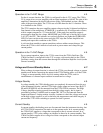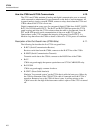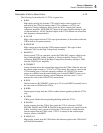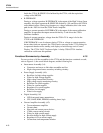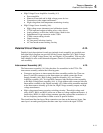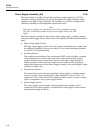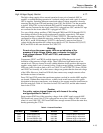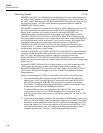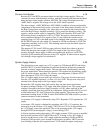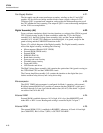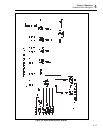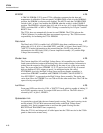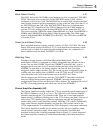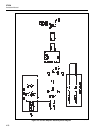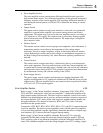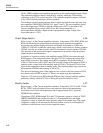
Theory of Operation
Detailed Circuit Description
4
4-15
Current-Limit Section 4-19.
Resistors R313 and R329 are current shunts for the high voltage supplies. These are
connected in series with the bridge rectifiers, with the common point between the shunts
being the high voltage supply common, HVCOM. The voltage developed across the
+400V shunt is negative; the voltage across the -400V shunt is positive.
The shunt voltages, +400V IMON and -400V IMON, in addition to being monitored by
comparators in the current-limit section, are routed via the Interconnect assembly (A1) to
the High Voltage Sense assembly (A6), where they are scanned by the analog monitor,
and to the High Voltage Amplifier assembly (A3) to control the autobias circuitry. The
negative current monitor signal is clamped by CR307 and filtered by R328 and C308
before being directly compared to 0.36V by U301B. The positive current monitor is
more complicated because of its negative value. To stay within the common-mode
operating range of U301A, the shunt signal is first summed with a reference voltage via
the R319/R318 network, after which it is clamped by CR306 and filtered by C308. The
comparator switching level is 0.18V. The summing network scales the shunt signal for
equal supply trip currents.
The outputs of U301A and U301B are open collector, which allows them to be wire-
OR’ed with the open drain output of Q309. The output of this logic drives Q308,
resetting the high voltage supply switches and signaling the processor via HVCLR.
Transistor Q310 monitors the presence of the ±15V supplies. If either of these supplies
fail, the high voltage supplies are switched off.
System Supply Section 4-20.
The digital/relay power supply tap (+5V) is routed via J350 through RT350 and bridge
rectifier CR351. A positive temperature-coefficient thermistor protects the instrument
from the secondary supply short circuits. This prevents them from thermally stressing
the power transformer. Three-terminal regulator U350 regulates the digital/relay supply
with 1% initial tolerance and about 2% accuracy over temperature. Capacitor C350
filters the input of U350; C351 filters the output.
The +5V digital supply powers both logic and relays. The power for each routes away
from the +5V regulator separately, via lines +5V and +5VK. This prevents relay drive
currents from causing drops in the logic supply voltage.
Because the ±20V supplies draw little current, they can share power transformer
secondary windings with the ±15V supply with little efficiency lost. This center-tapped
winding is brought to the Power Supply assembly via J350, where each half of the
winding is protected from short circuits by a thermistor. Bridge rectifier CR355, as well
as filter capacitors C353 and C356 again serve both supplies. The center tap of this
transformer winding forms VCOM, to which PACOM and HVCOM are tied to provide a
common reference for the instrument.
An accurate +15V supply is obtained by using U351. Regulator U352 regulates the -15V
supply.
An accurate +20V supply is obtained by regulating with U353, a 5V regulator, but
referencing it to the accurate +15V supply. VR351 forces U353 to be forward biased as
the +15V supply comes into regulation. This avoids powering up the +20V supply
through CR359 (at the improper voltage), reverse biasing U353.
A discrete regulator makes the negative -20V supply accurate. U354 is an error amplifier
that forces the junction of R352 and R350 to be 0V. In doing so, the -20V supply is
forced to be the inverse of the +20V supply within the matching of R350 and R352.
Transistor Q350 provides a pass element for the negative regulator; VR352 provides
level shifting so that the drive required from U354 is within its output swing range.



